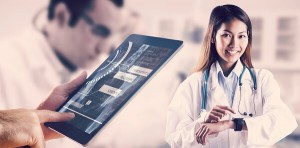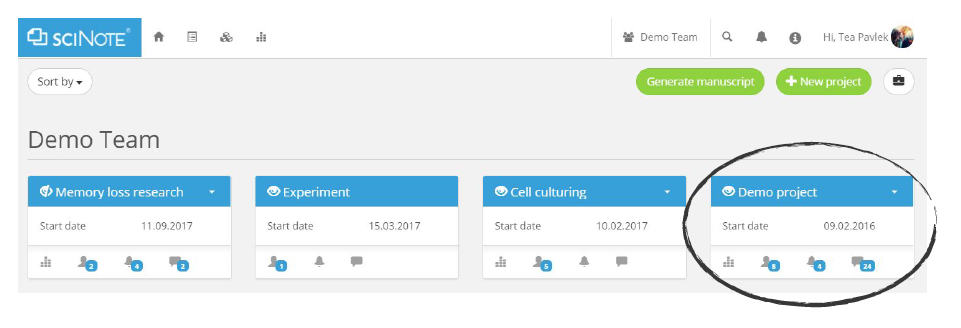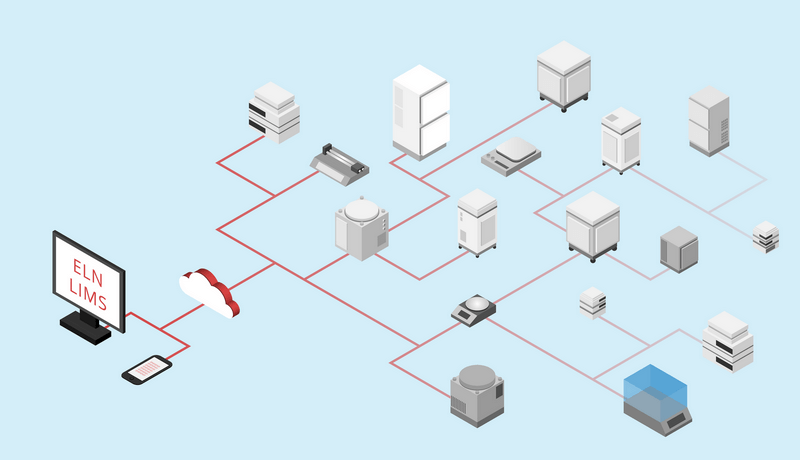Can you imagine yourself in the future working in a lab full of interconnected devices that are responsive and intelligent? This is not only wishful thinking but a soon-to-be reality called the Internet of Things (IoT).
The Internet of Things and human society go way back, much more than most people would expect. We could say the IoT already appeared in 1832, when Pavel Schilling, an early pioneer of electrical telegraphy, made a short distance transmission of electric signals between two telegraphs in different rooms of his apartment. However, the actual term was first coined in 1999 by Kevin Ashton, a co-founder and executive director of the Auto-ID Center at the MIT, where they were doing research in the field of networked radio-frequency identification (RFID) and emerging sensing technologies. Today, Ashton describes the IoT as a system where the Internet is connected to the physical world via ubiquitous sensors (1, 2, 3).
An important part of our physical world are objects and devices that were created to make our life easier. Vehicles, home appliances, mobile phones and wearable devices have already become our personal extensions. They are collecting all sorts of information and connecting these information to internet can make our everyday routine tasks even easier.
Remote controlling things over the internet is drastically changing the Life sciences sector as well, since the IoT-enabled devices facilitate remote tracking, monitoring, management and networking to improve the speed and precision of production execution (MES) and planning. Moreover, they help life sciences companies to lower their costs (4).
 Wearable medical devices are another example of the IoT-enabled devices, which are already being used in personalized medicine. They automatically collect the patient's health data and send it directly to personal mobile device of a patient’s physician. These devices can help improve patient’s health, since they enable real-time data analysis and provide early diagnosis (4).
Wearable medical devices are another example of the IoT-enabled devices, which are already being used in personalized medicine. They automatically collect the patient's health data and send it directly to personal mobile device of a patient’s physician. These devices can help improve patient’s health, since they enable real-time data analysis and provide early diagnosis (4).
In pharmaceutical and biotech industry several research teams are drifting away from paper-based processes to storing information electronically. The reason lies in producing large amounts of data and ongoing digitization of laboratory equipment. LIMS and ELN systems, such as sciNote, an open source electronic lab notebook, are already becoming common practices in the digital lab. Over time, more and more laboratories will be supported by “smart” interconnected devices, where the cloud based software solutions will play a big role (5).
However, there are always two sides of the same coin. Although the Internet of Things can simplify our ways of life, it still has to face with some of the unsolved problems like privacy issues and technical challenges. Nevertheless, scientists are very excited about the time, when their laboratory will become “smart”.
By Blazka Orel, MSc
References:
- Postscapes: A brief history of the internet of things
- The Engineering and Technology History Wiki: Pavel Schilling
- RFID Journal: That 'Internet of Things' Thing
- Digitalist magazine: How The Internet Of Things Is Disrupting Life Sciences Business Processes
- EPM magazine: How will the Internet of Things affect life sciences?
Further reading:
- Forbes: A Simple Explanation Of 'The Internet Of Things'
- Wired: The Internet of Things Is Far Bigger Than Anyone Realizes
[tw_callout size="waves-shortcode" text="" callout_style="style2" thumb="" btn_text="Republish the article" color="#37a0d9" btn_url="https://scinote.net/blog/republish/" btn_target="_blank"]




